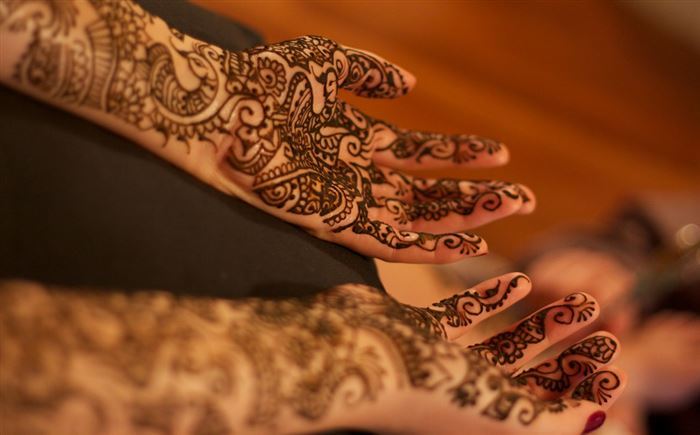Mehndi: The Art, Tradition, and Beauty of Henna

Article Outline
- Introduction to Mehndi
- The Art of Applying Mehndi
- Ingredients and Preparation
- Types of Mehndi
- Cultural Significance of Mehndi
- Mehndi at Weddings and Festivals
- Henna Tattoos: A Contemporary Trend
- Tips for a Perfect Mehndi Application
- The Chemical-Free Appeal of Mehndi
- Mehndi: A Bond of Generations
- Mehndi in Different Cultures
- Indian Mehndi
- Arabian Henna
- Mehndi: An Art and a Tradition
- The Aromatic Essence of Mehndi
- Challenges in Mehndi Application
- Mehndi: A Symbol of Beauty
- Conclusion
Introduction to Mehndi
Mehndi, also known as henna, is an ancient body art form. This traditional procedure involves applying a paste made from the leaves of the henna plant to create dramatic, temporary effects on the skin. It has been an important part of world culture for centuries, known for its beauty, cultural significance and fragrance.
The Art of Applying Mehndi
Ingredients and Preparation
Henna paste is usually made from henna leaves that are dried and ground into a fine powder. This powder is then mixed with other natural ingredients such as lemon juice, tea and essential oils. The result is a fragrant, thick cream that can be artistically applied to the skin.
Types of Mehndi
There are a variety of henna designs, each of which is specific and original. Indian, Arabic and Moroccan mehndi are some of the most popular styles, each with unique patterns and designs.
Cultural Significance of Mehndi
Mehndi has deep cultural and symbolic significance in many traditions. It is often considered a symbol of happiness and prosperity. In some cultures, the color and darkness of the henna stain is believed to represent the strength of a couple’s relationship.
Mehndi at Weddings and Festivals
One of the main occasions when mehndi is used is weddings. It’s a favorite pre-wedding ritual for brides, with intricate hand and foot tattoos. In addition, henna is a common ingredient for festivals and celebrations, adding to the festive spirit.
Henna Tattoos: A Contemporary Trend
Mehndi has crossed cultural boundaries and is now a global phenomenon. Mehndi tattoos are popular in many parts of the world, where people get temporary mehndi designs for different occasions from music festivals to beach vacations
Tips for a Perfect Mehndi Application
Getting a flawless mehndi design takes skill and practice. It is important to choose a reputable artist or you are skilled in the art yourself. In addition, proper aftercare, including avoiding brief exposure to water, helps to maintain the longevity of the henna.
The Chemical-Free Appeal of Mehndi
Henna is not only appealing for its beauty, but also for its natural and chemical-free nature. Unlike some modern tattoo techniques, henna does not contain harmful chemicals, making it a safe option for body art.
Mehndi: A Bond of Generations
Mehndi has been common for generations, with mothers teaching their daughters the art of mehndi. This tradition reinforces the idea of family and cultural continuity.
Mehndi in Different Cultures
Indian Mehndi
Mehndi is an integral part of weddings and festivals in India. Decorated with intricate carvings, they often incorporate culturally and religiously significant symbols and ideas.
Arabian Henna
Arabic henna is known for its bold and geometric designs. It is often used to decorate the hands and feet and occupies an important place in Arab culture, especially during festivals and special occasions.
Mehndi: An Art and a Tradition
Mehndi is not just body art; It’s a living tradition. While designs, patterns and symbolism have evolved over the years, the essence of Mehndi is deeply rooted in tradition.
The Aromatic Essence of Mehndi
One of the most appealing features of mehndi is its sweet fragrance. The essential oils and natural ingredients used in the henna paste give off an aromatic fragrance as the design dries and darkens on the skin
Challenges in Mehndi Application
Mehndi, though beautiful, is not without its challenges. Getting the right design requires a steady hand and patience. Factors such as humidity and humidity can affect the results of henna stains.
Mehndi: A Symbol of Beauty
Mehndi is a timeless symbol of beauty and culture. It enhances the beauty of each event and serves as a reminder of the rich heritage and traditions it represents.
Conclusion
Mehndi, or henna, is more than just body art; It is a testament to culture, tradition and natural beauty. Its enduring appeal has made it a world-favorite event, enriching our lives with art and heritage.
FAQs
What is the cultural significance of henna?Mehndi is often seen as a symbol of happiness and prosperity, with the color of the stain in some cultures representing the strength of the relationship
What are mehndi designs?There are some well-known Indian, Arabic and Moroccan mehndi designs, each with their own unique designs and origins
Why is mehndi popular in weddings?Mehndi is a favorite ritual of brides before marriage, where their hands and feet are intricately decorated, symbolizing beauty and tradition
Is henna safe for the skin?Yes, henna has no chemicals and is safe for the skin, making it popular for body art.
What are the challenges of applying henna?Achieving a perfect henna design requires dexterity, a steady hand, and factors such as temperature and humidity can affect what will result from henna stains

